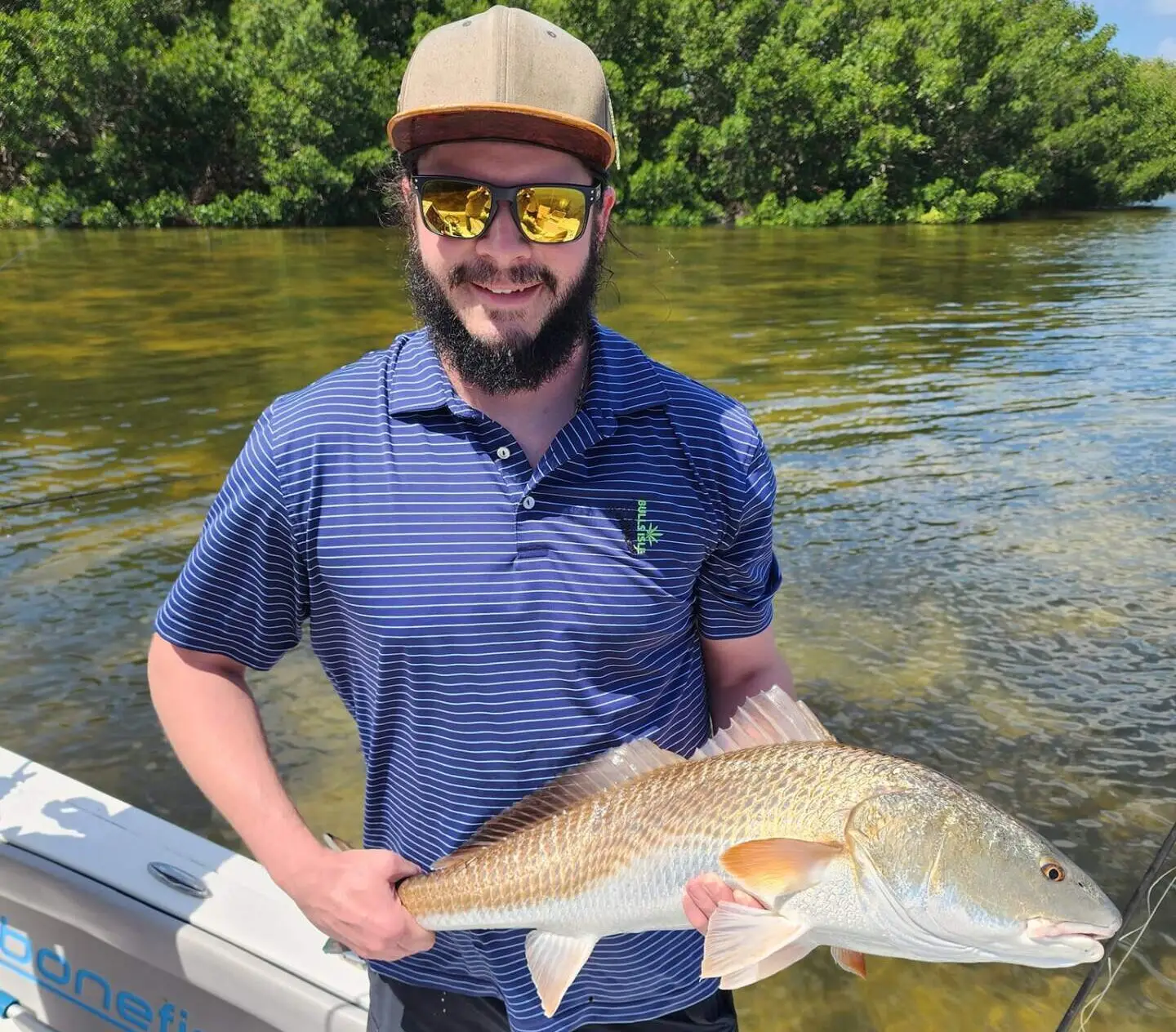Louisiana’s coast is famous for redfish, and early summer is one of the best times to target them. As water temperatures rise and baitfish become more active, redfish feed aggressively and move into predictable patterns that make for exciting days on the water. Charter fishing during this time offers a high success rate, scenic marshes, and a uniquely southern fishing experience that keeps locals and traveling fishermen coming back year after year.
This guide breaks down what makes early summer prime time for redfish, what to expect on a Louisiana redfish charter, and how to prepare for a successful trip.
Why Early Summer Is Prime Redfish Time
Early summer marks a seasonal transition along the Louisiana coast. Water temperatures climb into the mid-70s and low 80s, baitfish like mullet and menhaden school up, and shrimp begin to migrate into the estuaries. Redfish respond by feeding heavily, especially in marsh drains, on flats, and around structure where ambush opportunities are best.
Several key factors make early summer redfishing especially productive:
-
Stable weather: Most days are warm, humid, and calm, allowing for longer runs and fewer days canceled by wind.
-
Tidal movement: Summer brings reliable tidal shifts that create natural feeding windows during falling and incoming tides.
-
Post-spawn activity: Many redfish are past the spring spawn and resume normal feeding behavior, often with increased aggression.
Redfish also tend to school up more predictably in early summer, particularly slot-sized fish that range from 16 to 27 inches. These are the ideal targets for charter clients, especially those looking for action, table fare, or just the thrill of a shallow-water fight.
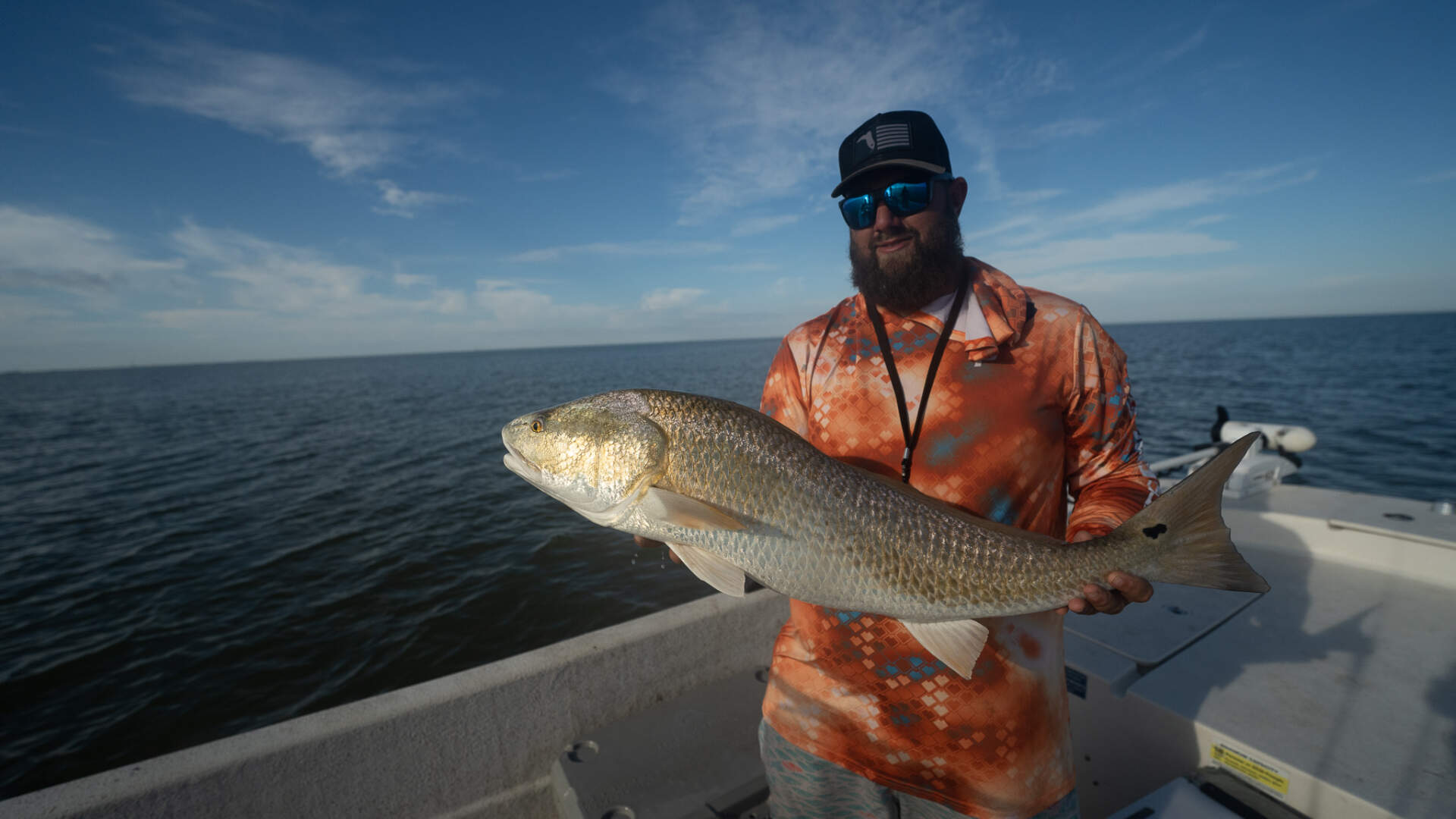
Where Louisiana Charters Find Redfish in Early Summer
Redfish can be caught in many parts of the Louisiana coast, but early summer charters often key in on specific zones depending on tidal movement, water clarity, and bait concentration. Some of the most productive areas include:
Interior Marshes
Many guides will begin their search inside the marsh. Here, redfish use small cuts, ponds, and grassy flats to ambush bait. A falling tide is ideal in these zones, as it pulls water (and food) out of the ponds and funnels it through narrow drains where redfish wait to strike.
-
Best for: Sight fishing, lighter tackle, and fly fishing
-
Common setups: Weedless soft plastics, shallow crankbaits, and small popping cork rigs
Shorelines and Points
Redfish cruising shoreline edges or holding near grassy points are a staple of summer fishing. When bait is being pushed up against the shore by a falling tide, or redfish are following mullet schools down a bank, these areas light up with action.
-
Best for: Cast-and-retrieve action with artificial lures or cut bait
-
Common setups: Spinnerbaits, gold spoons, or Carolina-rigged cracked crab
Outer Bays and Broken Marsh
As water clarity improves and baitfish grow in size, some redfish will push into slightly deeper water near oyster beds, shell bottoms, or oil field structure. These spots tend to hold larger fish, including bull reds, and are often accessed on longer runs.
-
Best for: Bigger fish and meat trips
-
Common setups: Live mullet, cut menhaden, or large artificial swimbaits
Each charter captain has their own set of “go-to” zones, usually based on years of experience in a specific part of the Louisiana coast, from Venice to Hopedale to Cocodrie.
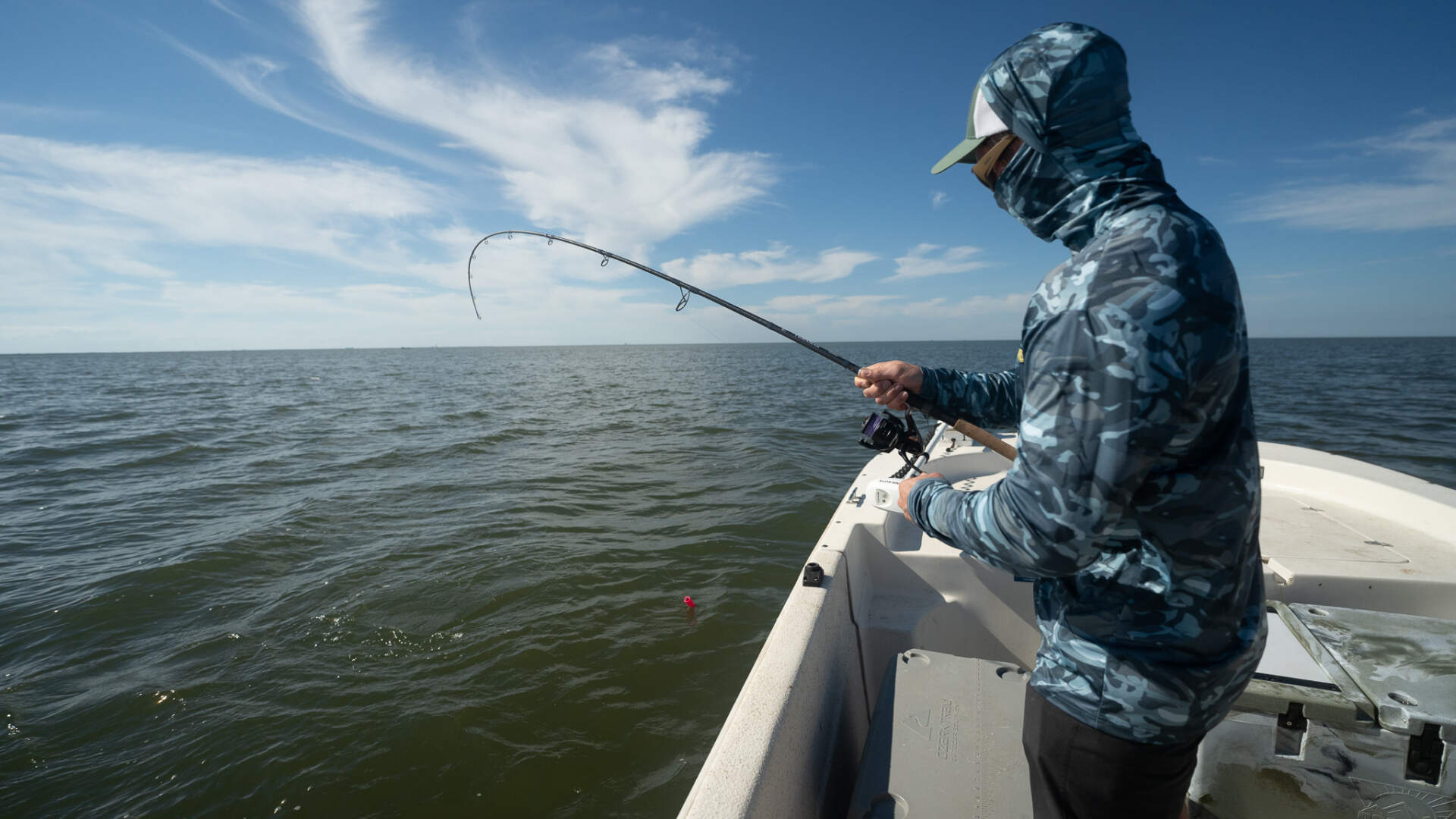
What a Redfish Charter Trip Looks Like
Booking a redfish charter is the best way to get straight into productive fishing without worrying about tides, access, or reading water. Most redfish guides in Louisiana operate shallow-draft bay boats or flats skiffs equipped for marsh work, often with elevated casting decks or towers for better visibility.
Here’s what a typical trip includes:
-
Early morning launch: Most charters leave before sunrise to beat the heat and catch the morning bite.
-
Ride to the marsh: Depending on the launch point and targeted zone, this can range from 5 to 30 miles.
-
Tide-based fishing plan: Guides will time their stops with the current, focusing on drains, flats, or points based on tidal movement.
-
Flexible methods: Some guides cater to fly fishing and sight casting, while others focus on bait fishing for numbers.
-
Fish cleaning: Nearly all charter captains will clean and bag your catch at the end of the day.
A standard trip runs about 6–8 hours, with some offering extended full-day or split-day options, especially if targeting a two-species trip (like redfish and speckled trout).
Gear Tips: What to Bring (and What the Guide Provides)
Most Louisiana redfish guides provide everything you need to fish, including rods, reels, tackle, bait, and ice. Still, bringing the right personal gear can make or break your comfort on the water.
What the guide provides:
-
Rods and reels (usually medium-light to medium-heavy spinning setups)
-
Tackle and bait
-
Safety gear
-
Fuel, navigation, and cooler for fish
-
Fish cleaning
What you should bring:
-
Sunscreen (non-aerosol preferred)
-
Polarized sunglasses
-
Lightweight, breathable clothing (long sleeves and sun hat)
-
Rain jacket (summer storms are common)
-
Personal cooler for food, drinks, and your cleaned catch
-
Valid Louisiana fishing license (required for all non-residents and most residents)
If you’re prone to motion sickness, taking non-drowsy medication before departure can help, especially on breezy days when the ride across bays might get choppy.
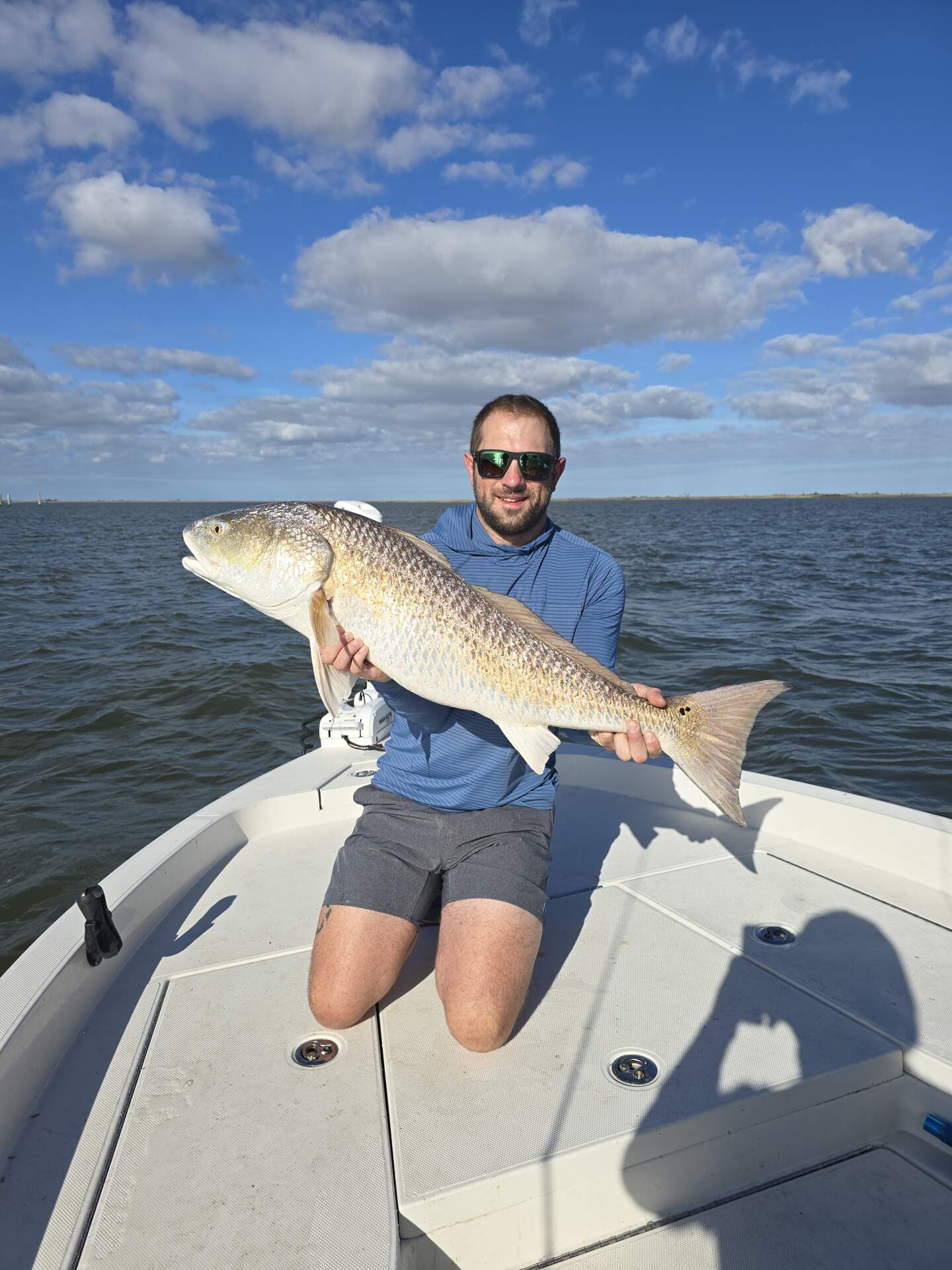
Techniques That Work Best in Early Summer
Redfish in early summer aren’t picky, but matching your approach to the habitat and tide can make the difference between a good trip and a great one.
Sight Casting
One of the most exciting ways to catch redfish in Louisiana’s shallow marshes is sight casting. This requires quiet stalking, accurate casting, and clear water. Most common in calm conditions and falling tides, it rewards stealth and quick reflexes.
-
Best gear: 7’–7’6” medium-light spinning rod with braided line and fluorocarbon leader
-
Best lures: Soft plastics on weedless hooks, spoons, or small flies (crab and shrimp imitations)
Popping Cork Rigs
The popping cork is a Louisiana staple for redfish. It mimics the sound of shrimp popping at the surface and draws fish to the bait below.
-
Rig: Popping cork with a 12″–24″ leader and a jig or live bait underneath
-
Best baits: Shrimp, cracked crab, or scented soft plastics
Cut Bait or Live Mullet
When redfish are schooling near structure or in deeper marsh edges, nothing beats cut bait or live mullet on the bottom.
-
Rig: Carolina rig or fish-finder rig with a circle hook
-
Best bait: Fresh cut mullet, menhaden, or crab
These rigs excel when targeting larger fish or when visibility is poor. The scent trail draws fish in even if they can’t see the bait clearly.
Early Summer Redfish Behavior to Watch
Knowing how redfish behave in early summer helps fishermen anticipate where to cast and what to expect.
-
Tailing: Redfish often tail on shallow flats in the morning. Their tails stick out of the water as they root in the mud for crabs.
-
Pushing wakes: In calmer conditions, you can spot redfish by the v-shaped wake they push as they cruise.
-
Blow-ups on bait: Redfish feeding on mullet or shrimp can erupt at the surface with splashes or boils.
-
Color change: Fired-up redfish often show a bronze or copper hue and may have darkened tails from rooting in shrimp beds or muddy bottoms.
Guides are trained to read this behavior and position you for the best possible shot, whether you’re throwing artificial or bait.
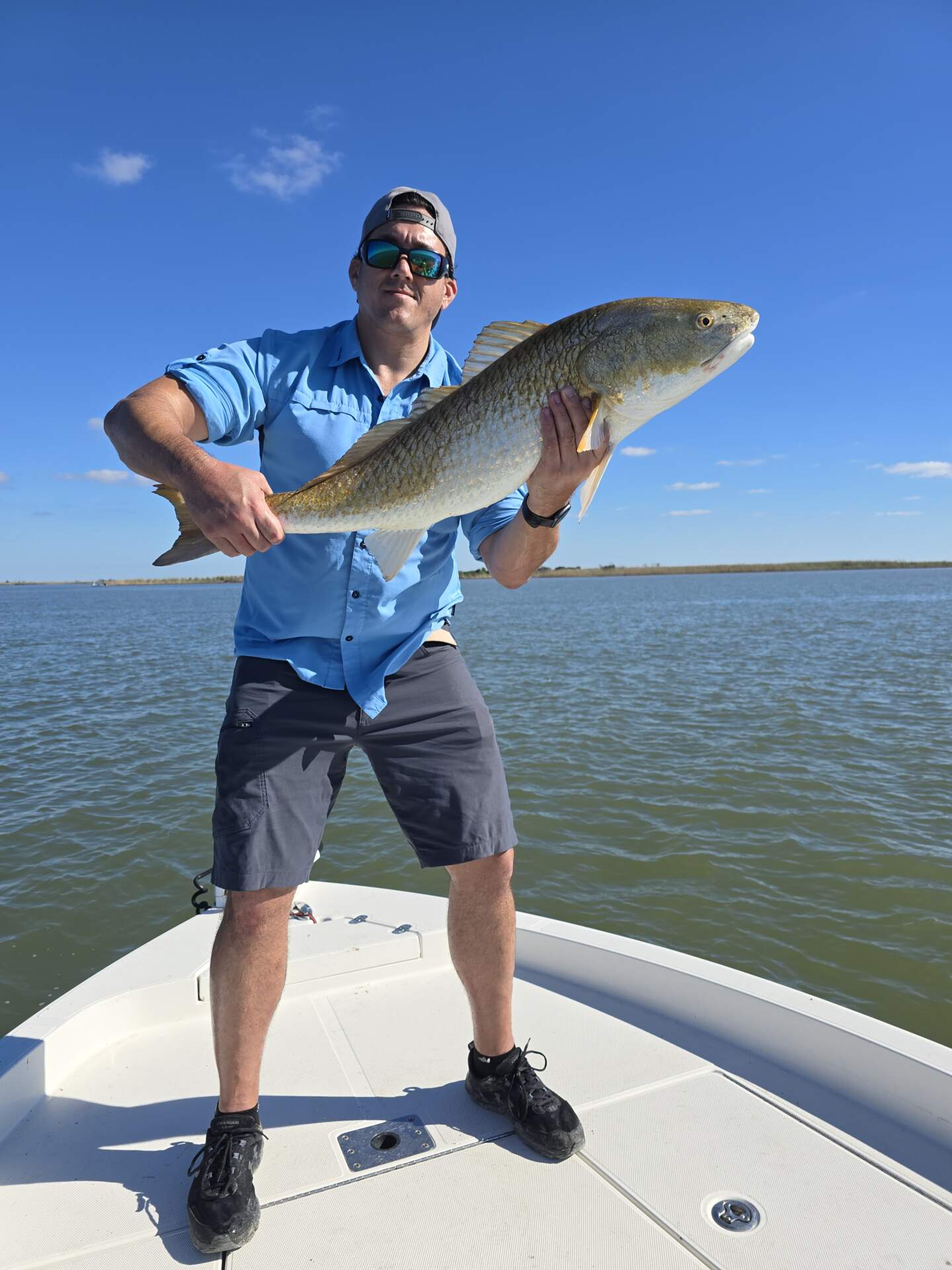
Regulations and Conservation
Louisiana redfish regulations are important to understand, especially since most charters prioritize sustainability.
-
Slot limit: Redfish must be between 16″ and 27″ to be kept. One fish over 27″ is allowed per person per day.
-
Bag limit: Five redfish per person per day.
Many charters encourage catch-and-release, especially of oversized breeders. If you’re looking for fish to eat, the slot range provides excellent table fare.
Why Book a Charter Instead of Going Alone?
While public access points exist throughout the coast, redfish habitat in Louisiana is vast, complex, and ever-changing. Most visiting fishermen find far more success with a charter because:
-
Guides know the marsh: From shifting oyster beds to active drains, guides have daily intel on where fish are feeding.
-
Local weather knowledge: Summer squalls and tide swings can surprise unprepared boaters.
-
Less time guessing: Instead of figuring it out as you go, you’re put on fish from the start.
A charter lets you focus on catching fish, not worrying about logistics, launch points, or broken-down gear in the middle of nowhere.
Start Your Early Summer Redfish Trip with FishnLA
At FishnLA, we partner with experienced, licensed charter captains who live and breathe Louisiana redfishing. Whether you’re a seasoned fisherman looking to sight-cast tailing reds or a first-timer who just wants to feel the tug, our guides tailor each trip to your goals.
We’ll get you on the water early, rigged up right, and set up to succeed in one of the most productive redfish fisheries in the country. All you need to bring is your license and your excitement.
Book your redfish charter today with FishnLA and experience the heart of Louisiana fishing at its finest.

